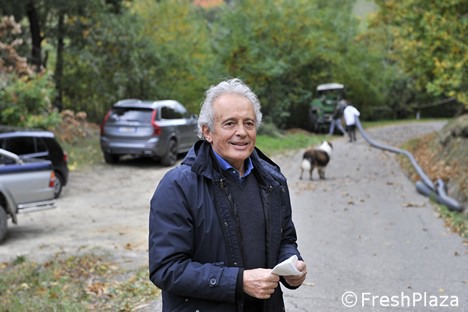"The chestnut harvest is coming to a close. We have collected an unprecedented amount and the size range is medium to large. We were actually at the yield level before the problems with the Chinese wasp. But surprisingly, we’ve got many kilos and a large size," said Renzo Panzacchi, president of the Consortium of Chestnut Growers of the Bolognese Apennines.
 Renzo Panzacchi
Renzo Panzacchi
"It is an abnormal situation on all fronts. The harvest period has shrunk to just over two weeks. That's almost a week less than normal. The temperatures are high, rather for summer fruit sales than fall fruit sales, and because of this, the market is a bit wait-and-see."
A machine is collecting husks
Growers' prices are feeling the impact of this combination of factors. In a few days at the wholesale market in Bologna, there were many unsold chestnuts. "On certain days, chestnuts were paid 7, 5 and 3 euros per kilo, depending on the size grading. But actually these are still nice figures. Prices are also good at village festivals, but the problem is that people do not buy large quantities," said the chairman.
Nets are used to collect the chestnuts in the Apennines around Bologna
Growers are also facing a shortage of harvesting workers. "This has led to more investments in mechanization, with the purchase of machines that pick up the husks. There are also growers who spread nets under the chestnut trees to make harvesting easier. And with the right nets, even the larvae of cydiae do not reach the site."










